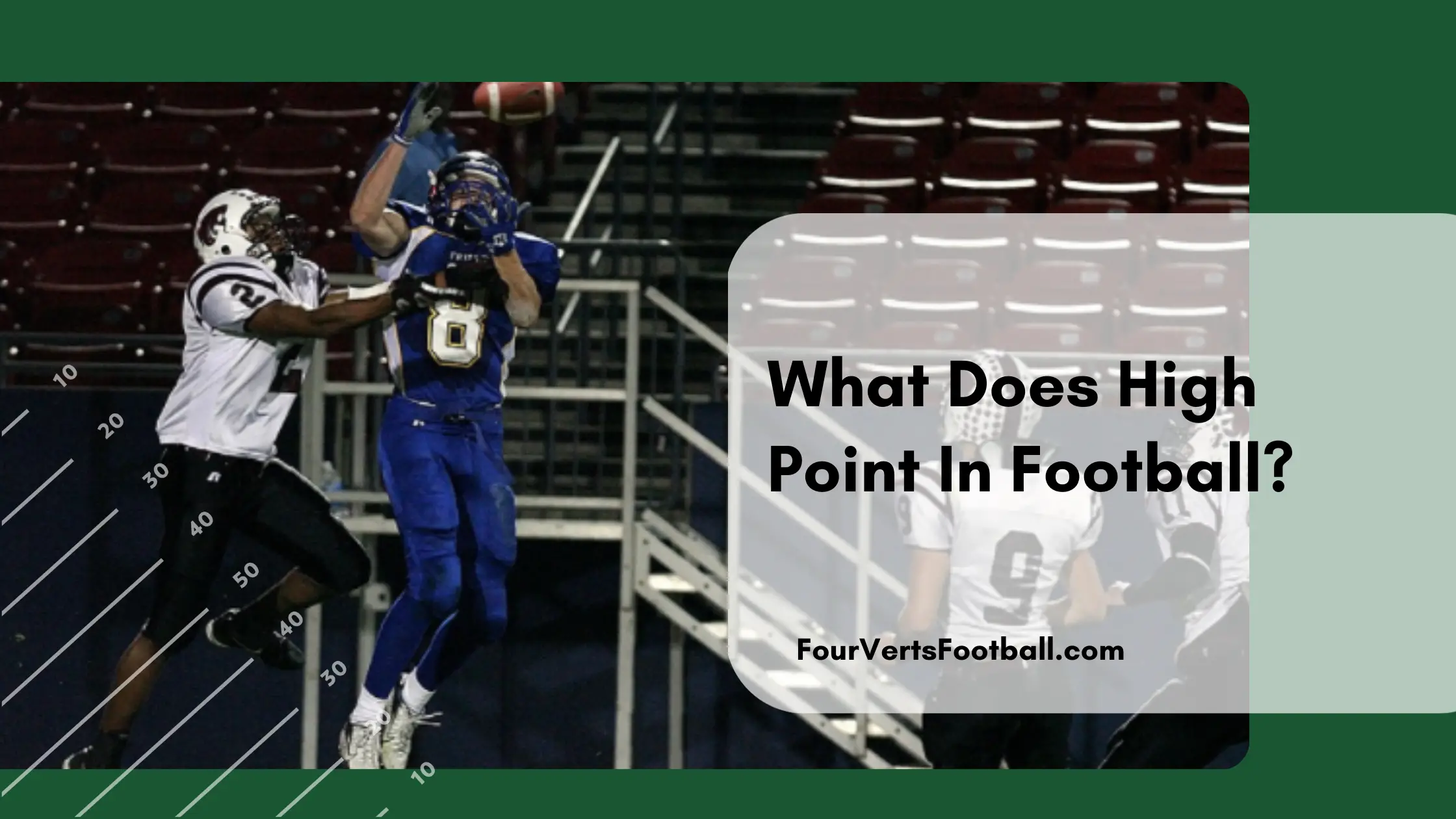A high point in football refers to the action of a player catching the ball at the peak of his jump. If a player times his jump so that he is at his peak when he catches the ball then he has effectively high-pointed the ball.
High pointing is an effective method used by receivers in order to come down with contested catches.
In football defensive backs are usually going to be close to wide receivers when they go up to catch a ball. One advantage receivers have is that they are usually taller than the defensive backs that are covering them.
By high pointing the ball, the receiver can take advantage of their height and ensure they catch the ball at a point where the defensive back cannot reach.
High pointing the ball in football is a skill that depends on great timing and body control. Players will attempt to do this anytime a jump ball is thrown their way but it is a skill that is trouble to pull off consistently.
Deep ball receivers are often the best at high pointing the ball as they specialize in making difficult catches downfield.
Which Routes Require Receivers To High Point The Ball?
Now that you understand what high pointing means in football it is time to break down which routes require receivers to use this strategy.
Fade Route
The fade route is arguably the most important route to high point in football. This route does not involve any cuts and usually involves next to no separation from the defender.
Instead, this route relies on the wide receiver beating out the defender to bring down a contested catch. In most cases, this route is going to be run by taller, bigger receivers.
These players will usually have a height and length advantage against the corner. This way when the ball is thrown high towards their outside shoulder they can reach it while the defender cannot.
This route relies on the receiver high pointing the ball and using his height and length to his advantage.
Comeback Route
Another route that often has receivers timing their jump for the ball is comeback routes. The ideal throw on a comeback route is low and in the center of the receiver’s body.
This works well when the defender is behind the receiver and cannot get to this pass. Since it is low to the ground this is a low-risk throw that will usually result in a completed pass.
But when the defender stays with the receiver on his comeback the best throw is often high and away. These throws are aimed above the receiver’s head and towards the sideline.
The receiver will have to high point these passes in order to come down with the catch. If they do not time their jump properly the defensive back will usually be able to break up the pass.
Post Route
One more route that will often require a well-timed jump is a post route. When running a post route the wide receiver will often have to come down with the ball with a cornerback and safety nearby.
Oftentimes the free safety will be waiting in the defensive backfield for a deep pass. In these situations, the wide receiver needs to come in front of the safety and high point the ball.
If the receiver does not high point the ball the safety will have a shot at an interception.
Receivers running this route will usually have the height and length advantage over the free safety. This is another situation in which they need to use these traits to their advantage and win the fight for the ball.

